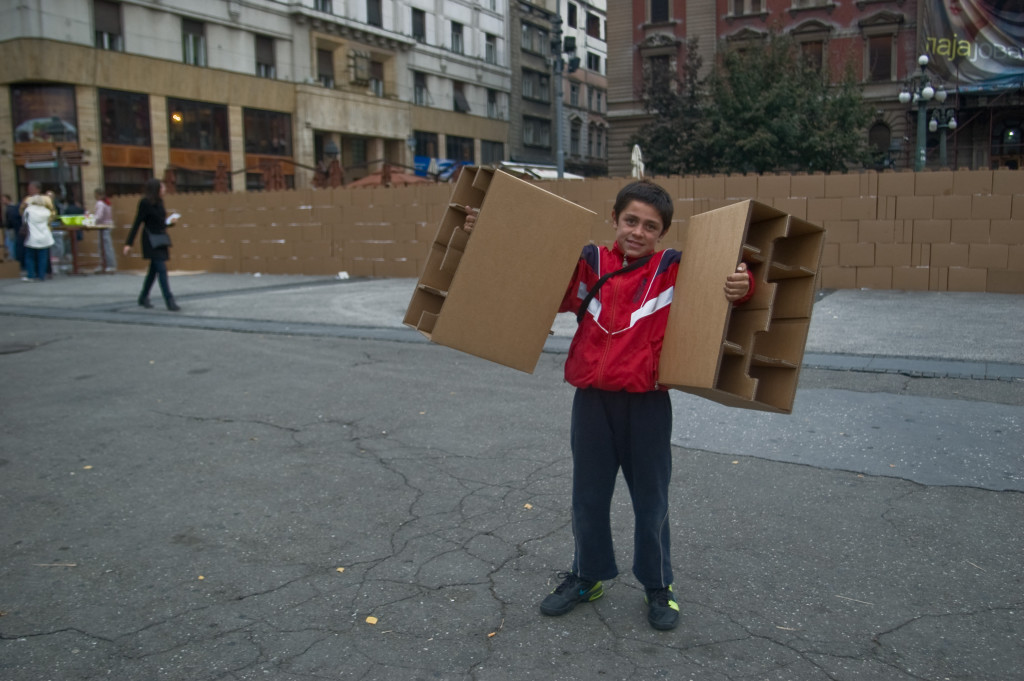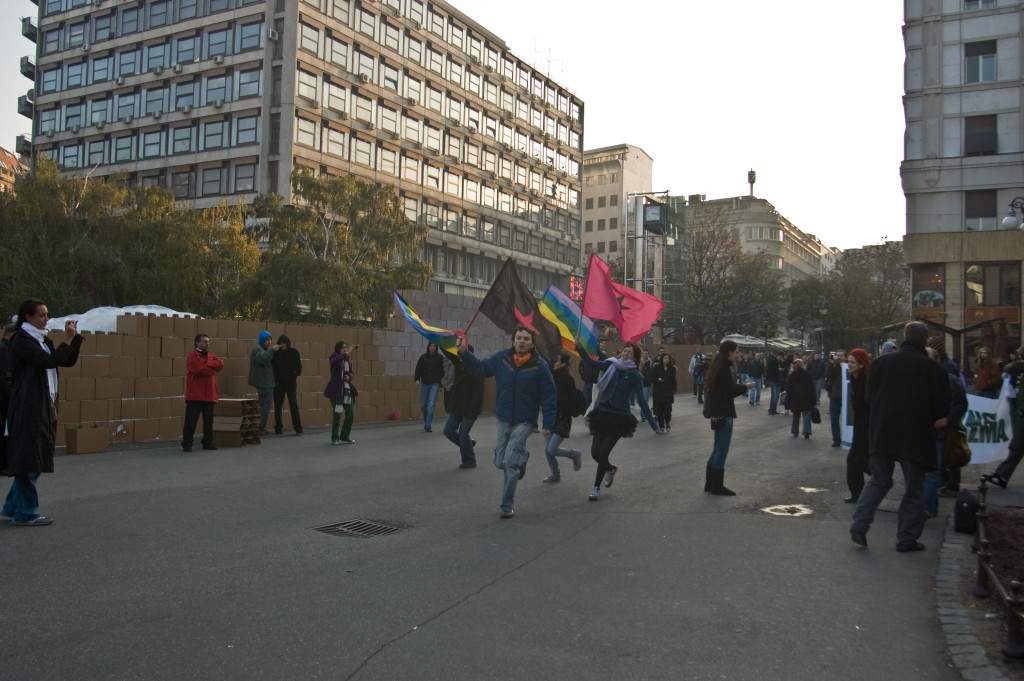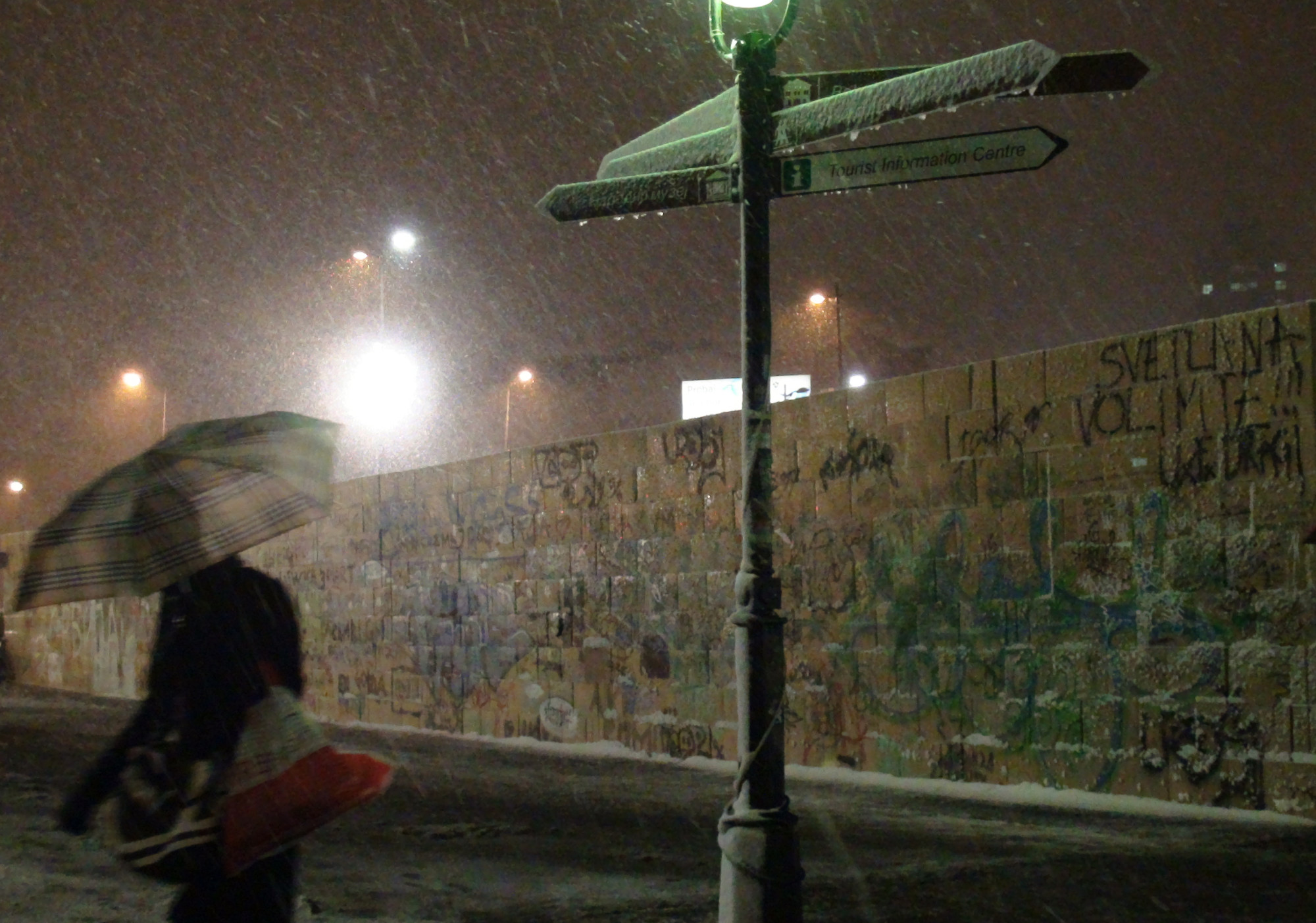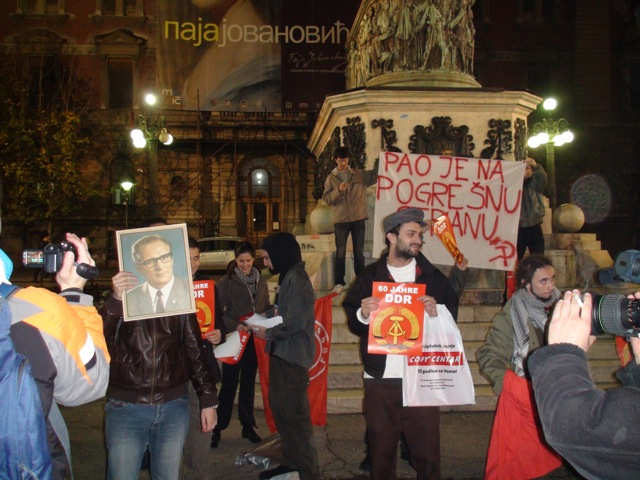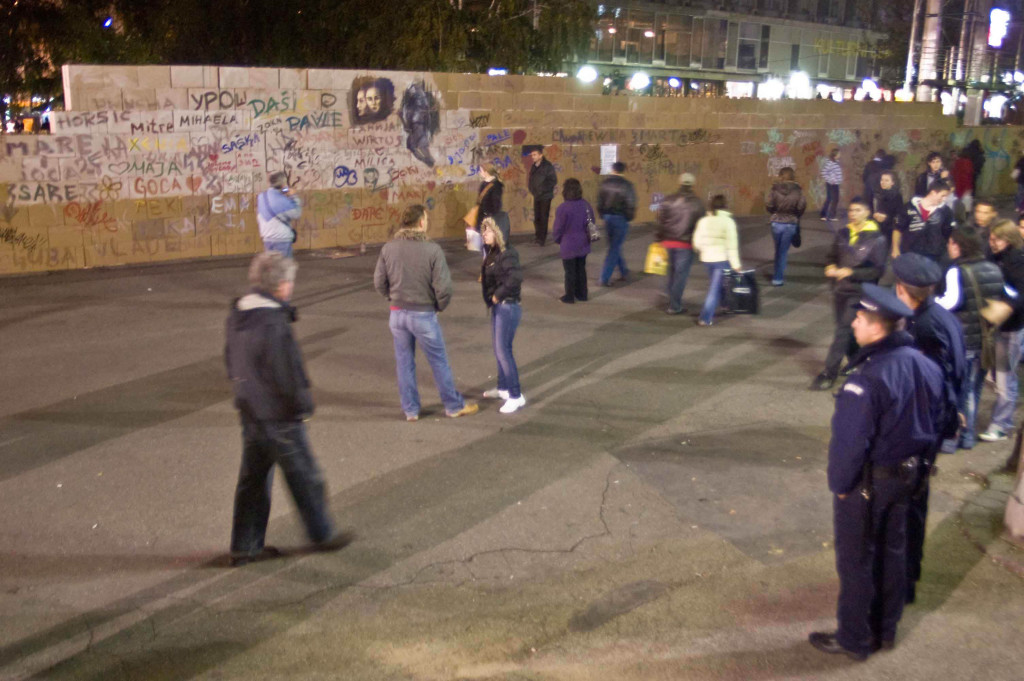Belgrade Wall
Zum 20-jährigen Jubiläum des Mauerfalls in Berlin wurde Belgrad durch eine „über Nacht“ erstellte, monumentale Pappkopie des eisernen Vorhangs auf dem Platz der Republik in Belgrads geteilt. Der Grenzwall, der den nördlichen Teil der Stadt entlang der Mauerachse vom südlichen Teil isolierte, wurde von Bürgern der Stadt aus faltbaren Pappziegeln und Leim errichtet – andere Bürger beteiligten sich, indem sie die Mauer wieder abbauten, Material entwendeten oder anderweitig zu verhindern suchten. Der politischen Situation Deutschlands vor dem Mauerfall am 9.11.1989 entsprechend trennte die Stadt Belgrad das Bollwerk symbolisch in zwei Sektoren. Mit der Fertigstellung des Schutzwalls wurde die Grenze geschlossen, Grenzpolizisten sicherten die Staatsgrenze und informierten über die neue politische Situation Serbiens. Über die Stadt verteilt entstanden von Bürgern der Stadt erbaute weitere Grenzwälle, die von anderen Bürgern wieder abgebaut wurden. An der Mauer kam es zu Demonstrationen der lokalen ANTIFA-Bewegung, zu nationalistischen Versammlungen, Treffen der Kriegsveteranen und Demonstrationen für einen Wiederaufbau der DDR. In den Medien wurde ein Diskurs über weiterhin präsente „Mauern in den Köpfen“ der Bevölkerung im Schmelztiegel des Balkans angestoßen. Die Belgrader Mauer fiel in der Nacht zum 10.11.2009 angeblich durch einen Schneesturm.
On the 20th anniversary of the fall of the Berlin Wall, Belgrade was divided by a monumental cardboard copy of the Iron Curtain created „overnight“ on Belgrade’s Republic Square. The border wall, which isolated the northern part of the city from the southern part along the axis of the wall, was erected by citizens of the city using foldable cardboard bricks and glue – other citizens participated by dismantling the wall again, stealing material or otherwise trying to prevent it. In keeping with the political situation in Germany before the fall of the Wall on 9 November 1989, the city of Belgrade symbolically divided the bulwark into two sectors. With the completion of the rampart, the border was closed, border police officers secured the state border and provided information about the new political situation in Serbia. Other border ramparts were built by citizens of the city and dismantled by other citizens. At the wall there were demonstrations by the local ANTIFA movement, nationalist gatherings, meetings of war veterans and demonstrations for a reconstruction of the GDR. A discourse was initiated in the media about the still present „walls in the minds“ of the population in the melting pot of the Balkans. The Belgrade Wall fell in the night of 10.11.2009, allegedly due to a snowstorm.
